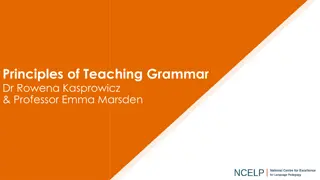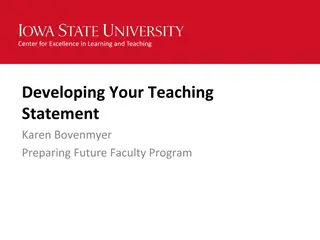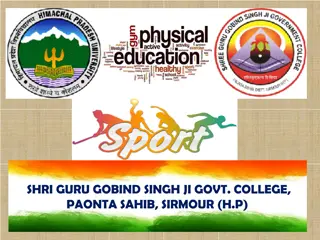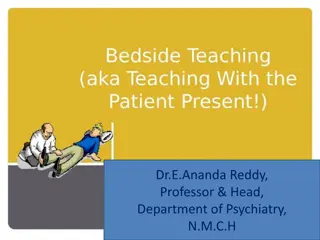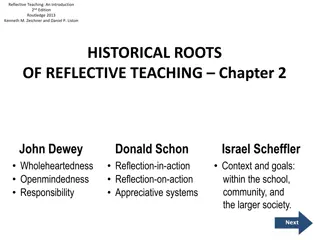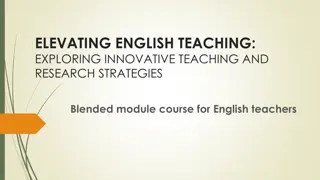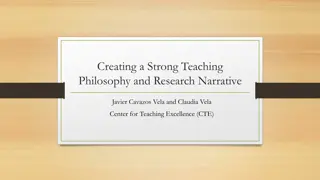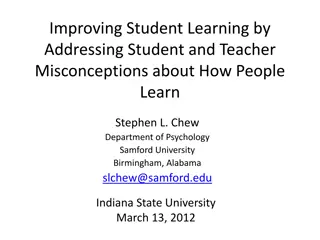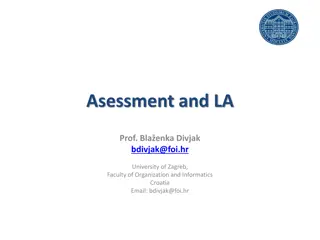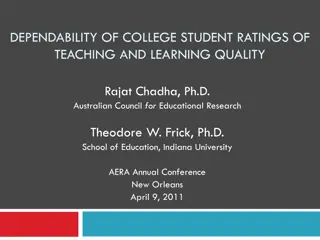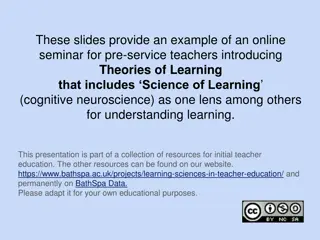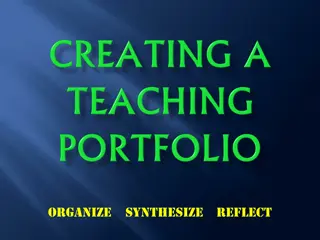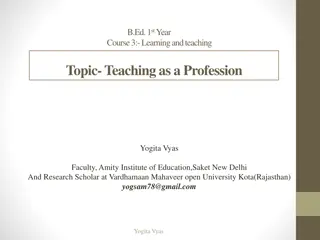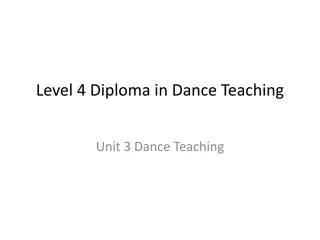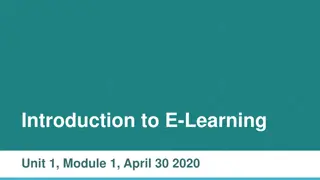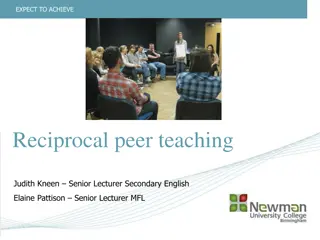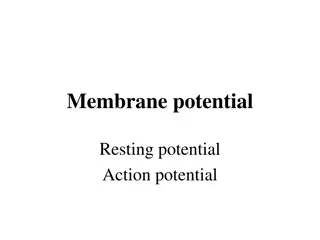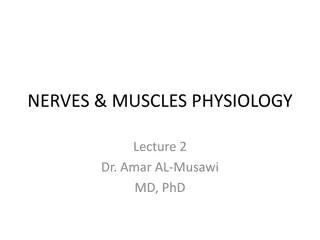Exploring Rosenshine's Principles in Action: Teaching and Learning Session 1
Delve into the world of educational research and classroom practice with Tom Sherrington's guide on Rosenshine's Principles in Action. This session covers self-awareness, cognitive processing, and research-based instructional strategies. Follow along with tasks and reflections to enhance your teaching effectiveness.
Download Presentation

Please find below an Image/Link to download the presentation.
The content on the website is provided AS IS for your information and personal use only. It may not be sold, licensed, or shared on other websites without obtaining consent from the author. Download presentation by click this link. If you encounter any issues during the download, it is possible that the publisher has removed the file from their server.
E N D
Presentation Transcript
XXX Teaching and Learning Session 1: Introduction and Research Rosenshine s Principles in Action by Tom Sherrington Rosenshine provides a highly accessible bridge between research and classroom practice. His principles are short, easy to read, and packed with insights. Welcome to the first of a series of five sessions that will be exploring Rosenshine s Principles in Action by Tom Sherrington. We will be using this reflection booklet alongside Tom s videos in which he delivers in depth training on the principles and how they can support us all to be more effective teachers in the classroom. Whilst it is recommended to complete each session in one sitting, you can of course stop the video at any relevant point and break the session into smaller parts to fit in with your responsibilities. Simply follow the instructions in this booklet that will provide you with relevant links, tasks and reflection points. Activity 1 (5 minutes) Watch the following short video in which Tom Sherrington gives a brief outline of the video series to follow: Introduction to Rosenshine Masterclasses Tom references his blog in this video which can also be found here: https://teacherhead.com/2018/06/10/exploring- barak-rosenshines-seminal-principles-of-instruction- why-it-is-the-must-read-for-all-teachers/
We are now going to move into the main part of the session in which we will use Tom s first video as the basis of our training. You will need to pause the video at different points to complete tasks in this booklet and so may find it easier to print the booklet or use a split screen on your computer. Locate the video here and press play: Rosenshine Masterclass I- Introduction and Research Pause the video at 4.55 and complete the following activity. Self Awareness In this section of the video, Tom explores the idea of teachers being self aware and looks at the difference between teachers who know their strengths and weaknesses and those that do not. Activity 2: 10 minutes How self-aware do you think you are? Are you aware of your strengths and areas of improvement? What are they? Write some brief details below. You may want to consider your drop-in feedback. Activity 2 Notes
Theory of Action Resume the video and watch until 8.12. Activity 3: 15 minutes What are your key points of learning from this? Consider the following questions: How do we know the things we are doing in lessons lead to learning? To what extent do your lessons allow for cognitive processing? What tasks do you currently use that require low amounts of cognitive processing? How could you adapt these? Activity 3 Notes
Principles of Instruction: Research based strategies that all teachers should know by Barack Rosenshine. Resume the video and stop it again at 8.50. Tom emphasises the importance of everyone reading the principles in full. Activity 4: 45 minutes- 1 hour Go to the following link and read through Rosenshine s piece on the principles. This reading is essential for underpinning the different things Tom will talk about in his videos. Rosenshine's Principles of Instruction Try making notes on this using the Cornell note-taking system. This is a really effective way to make notes and can also be used in the classroom when challenging students to deal with large pieces of information and organise their thinking.
Cornell Note-Taking System Topic: Key Words/Prompts Main Notes Summary
Working Memory and Long Term Memory Now you have a better understanding of the principles, it is time to resume the video. This part is going to look in more depth at working memory and long term memory. Pause the video at 14.51 and look at the diagram below. This will also be on your video screen. Activity 5: 15 minutes Around the outside of the diagram, write down your interpretation of what this is telling us and what problems it might suggest in terms of our students long term and working memories. Resume the video and add to/change any of your notes based on Tom s explanation of how memory works.
Schema Building Continue to watch the video until 25.26. In this section, Tom talks you through schema building and begins to outline the difference between shallow knowledge and rich knowledge. He addresses the fact that recall of surface level facts is a superficial example of learning and that there needs to exist a much broader knowledge base beneath that.
Activity 5: 15 minutes Take some time to reflect on this piece of learning and consider your own classroom practice. There will be things you do that on reflection, require a shallow level of knowledge and others that require a rich level of knowledge. Write some examples of these below. Shallow Knowledge Rich Knowledge
Five Key Strategies Resume the video and watch it now until the end. In this final section, Tom introduces us to Wiliam s Five Key Strategies and discusses the need for immediate feedback and utilising students to check their own and others knowledge. (Wiliam & Thompson, 2007) Notes on Five Key Strategies
Final Reflections Activity 6: 20-30 minutes Take some time to reflect on the video and your learning and make some notes on the following prompts: Key takeaways from the session are The key points of learning that I will look to address in my classroom practice are I would still like to know more about or need some additional support with o o o o


